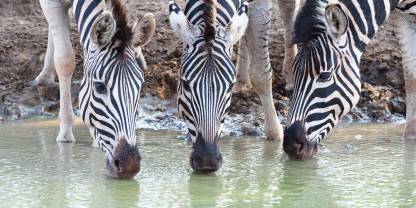Average Expert Rating
Rating Breakdown
Write a User ReviewFeathers and Fever Trees
Although it was recently incorporated as the 40 000 hectare uMkhuze Section of the iSimangaliso Wetland World Heritage Site, uMkhuze is one of Africa's oldest game reserves. With Sand Forest giving way to gently undulating grasslands, peppered with flat-top acacias and fever tree-choked drainage lines, the park is well-known amongst ornithologists for its varied habitat and rich birdlife. Twitchers tend to concentrate their energies on Nsumo Pan and the neighbouring fig tree forests, while wildlife enthusiasts focus their energies on Kumasinga Hide: the most productive of Mkuze's four recently refurbished game-viewing hides. Despite ongoing problems with poaching, Mkuze still boasts excellent densities of most antelope species. The reserve is also home to rhino, leopard, cheetah and wild dog and a programme to reintroduce lions has just been approved, so it won't be too long before the final member of the Big 5 makes a welcome reappearance in Mkuze Game Reserve.
Wet season – wildlife hides
Mkhuzi Game Reserve is located in KwaZulu-Natal and is part of the greater iSimangaliso Wetland Park. It has a variety of habitats and is rich in birdlife. There are lion, wild dog, leopard and elephant present, although the thick bush makes wildlife sightings tricky. Mkhuzi is famous for its hides, which are built overlooking waterholes and make for great photographic opportunities. These reach their peak of activity in the winter, during the dry season, when wildlife throngs to the water. We visited in January and despite hours of waiting, all we saw was a terrapin! Similarly, the guided walk through the fig tree forest, which is supposed to be beautiful, was also closed in January due to flooding. Note to self: revisit in the dry season.
A well-located reserve and home to a good cross-section of KwaZulu Natal’s game species
uMkhuze features the usual acacia savannah, but as it lies just to the northwest of the iSimangaliso Wetland Park, it also features tropical swamps and well-watered riverine forest. The roads were easy to navigate, but some passed through areas of thick bush, which were not ideal for game viewing. The grasslands, however, were more open, where we found giraffe, wildebeest, kudu and nyala, and at the airstrip we were lucky to see cheetah (they love the flatness of airstrips). Although I did see rhino, they aren’t as prolific as in Hluhluwe-Imfolozi. At the pans, we were able to get out of the car and walk down to some hides to watch the many aquatic birds. Mkuze’s appeal is its location; easily accessed off the N2 highway and not far from the coast, offering a good combination of safari options with the other Maputaland reserves.
Hiding in uMkhuze Game Reserve
Read more
of the Big Five and lots more, so you never know what you’ll find around the corner. I also really enjoyed the guided walk in the fig tree forest. This is the place to look for some good Zululand birding specials and I ticked off a few. Most of all I was just overwhelmed by the magnificent ancient fig trees easily appreciated from the raised wooden platforms in the canopy.Mellow uMkhuze
If you’re into birding then you’ll love uMkhuze Game Reserve – it's home to some 400-odd different species which have flourished in the park’s swamps and woodlands. For bigger mammal lovers like myself, the park has all of the Big Five, as well as nyala, wildebeest, warthog, impala, kudu and other smaller antelope. The park also offers rare sightings of hyena – heard but sadly not seen in my experience. Birders should make sure they take a stroll through the Fig Forest which provides numerous bird and monkey sightings, while the three hides offer excellent viewing of the larger mammals. At Nsumo Pan Hide I easily spied hippo and crocodiles and at Kumahloha hide I was amazed by the constant parade of wildlife coming down to the pan including rhino, giraffe, kudu, wildebeest, zebra and baboons.
Hide and seek
Visitors can enjoy guided day walks, night drives, self-guided trails and picnic sites – although the place never seems crowded. Best are the excellent viewing hides, each overlooking a different waterhole in its own distinct habitat. Photographers love these, and I have spent entire days watching the wildlife traffic coming and going. Other highlights include Nsumo Pan, teeming with hippos and crocodiles, and the fig forest trail, which winds
Read more
among giant riverine trees. The birding is outstanding – arguably the best in South Africa – with such local specials as African broadbill and pink-throated twinspot among an astonishing 420 recorded species.Photographers’ and birders’ paradise
uMkhuze is also an exceptional birding destination. Masinga Hide is a great place to see the likes of crested guineafowl, purple-crested turaco, crested

